The New Forest Hoard & other important properties


5 NOVEMBER 2025
Hotel Baur au Lac
Talstrasse 1, 8001 Zurich
Tel. + 41 44 220 50 20



5 NOVEMBER 2025
Hotel Baur au Lac
Talstrasse 1, 8001 Zurich
Tel. + 41 44 220 50 20
www.dgnumismatics.com
Suite 1, Claridge House
32 Davies Street
London, W1K 4ND United Kingdom
Tel: +44 203 011 1292 info@dgnumismatics.com
www.arsclassicacoins.com
Schipfe 2 8001 Zurich Switzerland
Phone +41 44 261 1703 zurich@arsclassicacoins.com
Suite 1, Claridge House 32 Davies Street
London, W1K 4ND United Kingdom
Tel: +44 207 839 7270 info@arsclassicacoins.com
www.arsclassicausa.com
8 South Michigan Avenue Suite 3600
Chicago, Il 60603 USA
Tel. +1 312 883 8541 usa@arsclassicacoins.com
Durch die Teilnahme an der Auktion werden die folgenden Bedingungen anerkannt:
1. Die Versteigerung erfolgt in Schweizer Franken. Der Zuschlag erfolgt nach dreimaligem Aufruf an den Höchstbietenden, dessen Gebot vom Auktionator (für elektronische (online) Auktionen: virtueller Auktionator) anerkannt wurde, und verpflichtet zur Annahme. Der Ausruf erfolgt in der Regel bei 80% des Schätzpreises, sofern nicht höhere Angebote vorliegen. Schriftliche Gebote haben Vorrang gegenüber telefonischen oder elektronischen Geboten. Jeder Ersteigerer verpflichtet sich persönlich für die durch ihn getätigten Käufe. Er kann nicht nachträglich geltend machen, für Rechnung Dritter gehandelt zu haben.
2. Telefonische oder schriftliche Bietaufträge (auch per E-Mail oder Fax) von nichtanwesenden Interessenten werden bis 24 Stunden vor Auktionsbeginn entgegengenommen. Elektronische Angebote über die Onlineplattform werden bis zum Zeitpunkt des Beginns der elektronischen Auktion angenommen. Sie sind unwiderruflich und verbindlich. Telefonische Bieter sind damit einverstanden, dass das Gespräch aufgezeichnet werden kann. Das Auktionshaus übernimmt keinerlei Haftung für schriftliche, elektronische und telefonische Bietaufträge.
3. Bieter werden gebeten, sich vor der Auktion zu legitimieren und anschliessend registrieren zu lassen. Das Auktionshaus kann eine Bankreferenz und/oder Sicherheiten verlangen. Es steht im Ermessen des Auktionshauses, eine Person nicht an der Auktion teilnehmen zu lassen.
4. Es steht dem Versteigerer nach seinem Ermessen frei, ein Gebot heraufzusetzen oder ohne Angabe von Gründen abzulehnen. Der Versteigerer behält sich ferner das Recht vor, Lose zu vereinigen, zu trennen, ausserhalb der Reihenfolge anzubieten oder wegzulassen bzw. von der Auktion zurückzuziehen.
5. Auf dem Zuschlagspreis ist ein Aufgeld (Provision) von 22,5% zu entrichten. Internet Live Bieter entrichten ein zusätzliches Aufgeld von 1% auf den Zuschlagspreis. Die schweizerische Mehrwertsteuer von 8,1% wird auf den Endpreis (Zuschlagspreis plus alle weiteren vom Auktionshaus dem Käufer in Rechnung gestellte Beträge) erhoben. Goldmünzen (AV) sind von der MwSt. befreit.
Bei Ausfuhr des ersteigerten Objekts ins Ausland wird dem Käufer die MwSt. zurückerstattet, wenn er eine rechtsgültige Ausfuhrdeklaration des schweizerischen Zolls beibringt.
6. Der Gesamtpreis wird mit erfolgtem Zuschlag zur Zahlung fällig und ist vor der Aushändigung des Objekts zu bezahlen, ausser es sei vor der Auktion eine andere schriftliche Abmachung getroffen worden. Für verspätete Zahlungen wird ein Verzugszins von 1% pro Monat in Rechnung gestellt. Das Eigentum geht erst mit der vollständigen Bezahlung auf den Käufer über. In der Regel liefert NAC das ersteigerte Objekt nicht vor der Bezahlung an den Käufer aus. Eine allfällige frühere Auslieferung bewirkt ausdrücklich keinen Eigentumsübergang und ändert nichts an der Zahlungsverpflichtung des Käufers.
Hat der Käufer nicht sofort und auch nicht innert fünf Tagen ab Erhalt einer eingeschriebenen schriftlichen Mahnung bezahlt, so ist NAC ohne weiteres und ohne weitere Anzeige berechtigt, vom Verkauf zurückzutreten.
7. Versand und Versicherung erfolgen auf Kosten und Risiko des Käufers (Ersteigerers). Im Ausland verrechnete Gebühren und Steuern gehen zulasten des Käufers (Ersteigerers). Diesem obliegt es, sich über ausländische Zoll- und Devisenvorschriften zu informieren. Das Auktionshaus übernimmt keine Haftung für allfällige Zuwiderhandlungen gegen solche Vorschriften.
8. Der Käufer verpflichtet sich, die erworbenen Waren nicht in Länder oder Gebiete zu exportieren, die wirtschaftlichen Sanktionen, Embargos oder anderen Handelsbeschränkungen unterliegen, die von der Schweizerischen Eidgenossenschaft verhängt wurden. Darüber hinaus verpflichtet sich der Käufer, die erworbenen Waren nicht an Personen oder Einrichtungen zu übertragen oder ihnen zur Verfügung zu stellen, die von Sanktionen der Schweizerischen Eidgenossenschaft betroffen sind, und alle aktuellen Schweizer Vorschriften bezüglich Export und Sanktionen einzuhalten.
9. Alle Angaben im Katalog wurden nach bestem Wissen und Gewissen zusammengestellt. Erweist sich ein Objekt nach dem Auktionsverkauf als Fälschung, so wird NAC den Verkauf namens des Einlieferers rückgängig machen und dem Käufer (Ersteigerer) den Kaufpreis (inkl. MWST) zurückerstatten. Der Käufer (Ersteigerer) kann eine solche Rückabwicklung ab dem Tag des Zuschlages für einen Zeitraum von zwei Jahren verlangen, sofern er den Mangel nach Entdeckung desselben mit eingeschriebenem Brief innert einer Frist von 5 Tagen gerügt hat.
10. Die zur Versteigerung gelangenden Objekte werden für Rechnung Dritter versteigert oder sind Eigentum des Auktionshauses. Der Käufer (Ersteigerer) hat keinen Anspruch auf Bekanntgabe des Einlieferers und ist damit einverstanden, dass das Auktionshaus auch von diesem eine Provision erhält.
11. NAC behält sich das Recht vor, eigens erstellte Fotografien oder Abbildungen der Objekte in seinen Publikationen und/oder auf seiner Website zu veröffentlichen und damit zu werben.
12. Die vorstehenden Bedingungen sind Bestandteil eines jeden einzelnen an der Auktion geschlossenen Kaufvertrags. Änderungen sind nur schriftlich gültig. Sofern Teile dieser Auktionsbedingungen der geltenden Rechtslage nicht mehr oder nicht vollständig entsprechen sollten, bleiben die übrigen Teile in ihrem Inhalt und ihrer Gültigkeit unberührt. Massgebend ist die deutsche Fassung dieser Auktionsbedingungen.
13. Die Auktion findet unter Mitwirkung des Stadtammannamtes Zürich 1 statt. Jede Haftung der mitwirkenden Behörde, des Stadtammanns, der Gemeinde oder des Staates für Handlungen des Auktionators entfällt. Das Vertragsverhältnis zwischen den Parteien untersteht in allen Teilen dem schweizerischen Recht. Erfüllungsort ist der Sitz des Auktionshauses in 8001 Zürich, und ausschliesslicher Gerichtsstand ist Zürich.
The following terms and conditions are accepted by all persons participating in the auction:
1. Auction bidding is conducted in Swiss Francs. The highest bidder who has been acknowledged by the auctioneer when the hammer falls after the third call, has legally bought the lot (for e-auctions there will be a virtual auctioneer). Bidding usually begins at 80% of the estimate, provided no higher offers have been submitted. Written bids have priority over telephone and electronic bids. The successful bidder has committed himself personally to the purchases made. He cannot claim to have acted on behalf of a third party.
2. Absentee bidders can send bids electronically until the start of the sale. Bidders wishing to send a written bid by email, fax or participate by telephone must send their bids no later than 24 hours before the start of the auction. All bids are final and binding. Telephone bidders must agree that calls may be recorded. The auction house does not take responsibility for bidding mandates made by telephone, electronically or in writing.
3. Bidders must show proof of identification before the auction, and subsequently register. The Auction House may require a bank reference and/or guarantee. The Auction House reserves the right to deny a person from participating in the auction.
4. The auctioneer may raise or reject a bid without giving a reason. Furthermore, they have the right to combine, separate, and offer catalogue lots in a different order, as well as omit or withdraw them from the auction.
5. A commission of 22.5% will be levied on the hammer price - bidders using our Live Internet facilities pay an additional charge of 1%. The Swiss value added tax (VAT) of 8.1% is payable on the final price (hammer price, plus buyer’s commission and any other amounts chargeable by the Auction House to the buyer). Gold coins (AV) are exempt from VAT.
If the purchases are exported, then the VAT will be refunded on production of a legally valid original export declaration issued by Swiss Customs.
6. Payment in Swiss Francs is due immediately upon adjudication of the lot and has to be paid with the release of the object to the Buyer, unless otherwise agreed in writing before the sale. Late payments will be subject to a monthly default interest of 1%. The ownership of a lot will not pass to the Buyer until NAC has received full payment on their account. NAC will generally not release a lot to a Buyer before payment. Earlier release of the lot does explicitly not affect its title nor the Buyer’s obligation to pay. If the Buyer has failed to make immediate payment or within 5 days after receipt of a registered, written reminder, NAC may in its sole discretion cancel the sale of the lot.
7. Shipping and insurance are at the buyer’s (successful bidder’s) cost and risk. Any fees and charges payable abroad are borne by the buyer (successful bidder) who is responsible for acquiring the necessary information on any applicable customs and foreign exchange regulations. The Auction House accepts no liability for any contraventions of such regulations.
8. The Buyer undertakes not to export the purchased goods to countries or territories subject to economic sanctions, embargoes, or other trade restrictions imposed by the Swiss Confederation. Furthermore, the Buyer undertakes not to transfer or make available the purchased goods to individuals or entities that are subject to sanctions imposed by the Swiss Confederation, and to comply with all current Swiss regulations regarding export and sanctions.
9. All identifications and descriptions of the items sold in this catalogue are statements of opinion and were made in good faith. Should an item sold later be found to be a fake, NAC shall cancel the sale made on behalf of the consignor and refund the sale’s price (including VAT as applicable) to the buyer. The buyer is entitled to claim such a refund within a period of two years from the date of the auction, provided that they have notified NAC of the defect by registered letter within 5 days from its detection.
10. The objects which come under the hammer are auctioned on behalf of a third party or are property of the Auction House. The buyer (successful bidder) has no entitlement to have the identity of the consignor disclosed to them and acknowledges that the Auction House might receive a commission from the consignor for the sale.
11. NAC reserves the right to use photographs and other representations of objects sold at auction, for promotional purposes, in its own publications and on its website.
12. The above conditions are a component of each individual contract of sale concluded at the auction. Alterations must be made in writing in order to be valid. If any parts of these Terms and Conditions should be no longer or not fully be in conformity with the valid legal situation, this shall not affect the content and validity of the remaining parts. The above-mentioned conditions are written in German, French, Italian and English; the only valid text is the German one.
13. The auction takes place under the supervision of officials of the city of Zurich (Stadtammannamt Zurich
1). Any liability of the cooperating authority, the municipality or the state for acts of the auctioneer is waived. The contractual relationship between parties is subject in all facets to Swiss law. Place of performance is the registered office of the Auction House in 8001 Zurich, and the exclusive court of jurisdiction is Zurich.
Du fait de la participation à la vente aux enchères, les conditions suivantes sont réputées être acceptées :
1. Les enchères sont effectuées en Francs Suisses. L’adjudication est réalisée après trois appels consécutifs du plus offrant dont l’offre a été acceptée par le commissaire-priseur et qui constitue une obligation (pour les ventes aux enchères électroniques il y aura le commissaire-priseur virtuel). La mise à prix est effectuée en règle générale à 80 %, dans la mesure où il n’y a pas d’offres disponibles et plus élevées. Les offres formulées par écrit sont prioritaires sur les offres téléphoniques ou électroniques. Chaque enchérisseur s’engage personnellement en ce qui concerne les acquisitions réalisées par ses soins. Il ne peut pas faire valoir le fait d’avoir agi pour le compte d’une tierce personne.
2. Les demandes d’enchères par téléphone ou par écrit (également par moyen électronique) pour les personnes intéressées et non présentes (ou plutôt en ligne pour les ventes aux enchères électroniques) doivent être réceptionnées jusqu’à 24 heures avant le début de la vente aux enchères. Toutes les offres sont finales et contraignantes. Les enchérisseurs par téléphone acceptent que la communication téléphonique puisse être enregistrée. La salle des ventes n’assume aucune responsabilité quant aux enchères effectuées par téléphone, électronique ou par écrit.
3. Les enchérisseurs sont priés de se légitimer avant la vente aux enchères et de se faire enregistrer à l’issue de la vente. La salle des ventes peut exiger une référence bancaire et/ou une garantie. La salle des ventes a le droit de ne pas laisser une personne participer à la vente aux enchères.
4. L’enchérisseur peut, à sa guise, surenchérir une offre ou bien la décliner sans indication de motifs. L’enchérisseur se réserve en outre le droit d’associer des lots, de les séparer, de faire des offres en dehors de l’ordre prévu ou de les laisser de côté, voire de se retirer de la vente aux enchères.
5. Une commission de 22,5% est perçue sur le prix d’adjudication. Les acquéreurs qui souhaitent participer aux enchères en ligne avec nos facilités Live Internet paieront un frais supplémentaire de 1%. La taxe à la valeur ajoutée suisse d’un montant de 8,1 % sera perçue sur le prix définitif (prix d’adjudication plus supplément et sur tous les autres montants facturés à l’acquéreur par la salle des ventes). Les pièces de monnaie en or (AV) sont dispensées de la TVA.
En cas d’exportation de l’objet adjugé vers l’étranger, l’acquéreur se voit restituer la TVA lorsqu’il est en mesure de présenter une déclaration d’exportation réglementaire, en bonne et due forme, des autorités douanières suisses.
6. Le prix total en francs suisses est exigible immédiatement après adjudication et doit être acquitté avant la remise de l’objet adjugé sauf si un autre accord écrit a été conclu avant la vente aux enchères. Pour les paiements effectués ultérieurement un intérêt moratoire de 1% par mois sera facturé. La transmission de la propriété à l’acquéreur a lieu seulement à paiement intégral. En général, NAC ne remets pas l’objet adjugé à l’acquéreur avant paiement. Une éventuelle livraison antérieure n’entraîne expressément aucun transfert de propriété et ne modifie en rien l’obligation de paiement de l’acheteur.
En cas que l’acquéreur n’a pas payé simultanément et non plus entre les cinq jours après réception d’un avertissement sous pli recommandé, NAC est en droit de se départir du contrat sans autre formalité et sans avis ultérieur.
7. Les frais d’envoi et d’assurance sont à charge et au risque de l’acquéreur (enchérisseur). Les taxes ou les impôts facturés à l’étranger sont à la charge de l’acquéreur (enchérisseur). Il lui incombe de s’informer au sujet des directives étrangères en matière de douane et de devises. La salle des ventes décline toute responsabilité pour les éventuelles infractions à l’encontre de ces directives.
8. L’Acheteur s’engage à ne pas exporter les biens achetés vers des pays ou territoires soumis à des sanctions économiques, des embargos ou d’autres restrictions commerciales imposées par la Confédération suisse. En outre, l’Acheteur s’engage à ne pas transférer ou mettre à disposition les biens achetés à des individus ou entités faisant l’objet de sanctions imposées par la Confédération suisse, et à respecter toutes les réglementations suisses en vigueur en matière d’exportation et de sanctions.
9. Toutes les indications mentionnées dans le catalogue sont rassemblées en toute conscience et en toute bonne foi. S’il s’avérait après la vente qu’un objet n’était pas authentique, NAC annulerait la vente faite de la part du consignataire et rembourserait le prix de vente (y compris toute TVA appliquée) à l’acheteur. L’acheteur a droit à demander un tel remboursement entre une période de 2 ans à partir de la date de la vente aux enchères, pourvu qu’il ait averti NAC du défaut par lettre recommandée dans un délai de 5 jours depuis sa détection.
10. Les objets mis aux enchères le sont pour le compte de tierces personnes ou bien sont la propriété de la salle des ventes. L’acquéreur (enchérisseur) n’a aucun droit d’obtenir communication du nom de la personne qui met en vente et se déclare en accord avec le fait que la salle des ventes perçoive une provision de cette dernière.
11. NAC se réserve le droit d’utiliser les photographes et d’autres représentations des objets vendus lors de ses ventes aux enchères à des fins promotionnelles, dans ses propres publications et sur son site Internet
12. Les présentes conditions font partie intégrante de tout contrat de vente conclu dans le cadre de la vente aux enchères. Les modifications ne sont valables que par écrit. Le fait que des parties des présentes conditions de vente aux enchères venaient à ne plus correspondre, ou du moins plus intégralement, à la situation juridique en vigueur, n’affecte en rien les autres parties, ni dans leur contenu, ni dans leur validité. La version en langue allemande constitue la référence des présentes conditions de vente aux enchères. 13. La vente se déroule sous la supervision des fonctionnaires de la ville de Zurich (Stadtammannamt Zurich 1). L’autorité coopérante, la municipalité et l’État sont exonérés de toute responsabilité pour les actes du commissaire-priseur. La relation contractuelle entre les parties en cause est soumise, dans toutes ses composantes, au droit Suisse. La compétence juridique est fixée au siège de la salle des ventes à 8001 Zurich, et le for juridique exclusif est Zurich.
La partecipazione all’asta comporta l’accettazione delle seguenti condizioni:
1. La valuta in cui viene condotta l’asta è il Franco Svizzero. L’aggiudicazione al miglior offerente, individuato dal banditore, avviene dopo la terza chiamata e comporta per l’aggiudicatario l’acquisto con tutti i relativi obblighi di legge. Le offerte partono generalmente dall’ 80% del prezzo di stima a meno che una o più offerte d’importo maggiore siano state presentate. Le offerte scritte hanno la precedenza sulle offerte telefoniche o elettroniche. Il partecipante all’asta è personalmente responsabile per l’acquisto effettuato e non può pretendere di avere agito per conto di terzi.
2. I partecipanti all’asta non presenti in sala possono presentare offerte telefonicamente, in forma scritta, o per via elettronica fino a 24 ore prima dell’inizio dell’asta. Ogni offerta è finale e vincolante. Coloro che trasmettono la propria offerta telefonicamente, prestano il proprio consenso all’eventuale registrazione della telefonata. La casa d’asta non si assume alcun tipo di responsabilità per le offerte trasmesse in forma scritta, elettronica o telefonica.
3. Per concorrere all’asta, i partecipanti dovranno esibire un documento d’identità e registrarsi. La casa d’asta si riserva il diritto di richiedere referenze bancarie o un deposito cauzionale per permettere la partecipazione all’asta. La casa d’asta si riserva inoltre il diritto di rifiutare la partecipazione all’asta di un soggetto.
4. Il banditore d’asta ha la facoltà di aumentare o rifiutare un’offerta secondo la propria discrezionalità e senza necessità di fornire una motivazione. Il banditore si riserva inoltre il diritto di unire, separare, cambiare la sequenza prevista o di eliminare e/o ritirare dall’asta determinati lotti.
5. Al prezzo d’aggiudicazione va aggiunta una commissione del 22,5%. Gli offerenti che parteciperanno all’asta ‘live’ attraverso internet pagheranno un costo supplementare dell’1%. L’imposta svizzera sul valore aggiunto, pari attualmente al 8,1%, viene applicata sul prezzo finale (prezzo d’aggiudicazione più commissione ed ogni altro importo imputabile al compratore dalla casa d’aste). Le monete in oro (AV) sono esonerate dal pagamento dell’IVA.
In caso d’esportazione dell’oggetto acquistato all’asta verso un paese estero, il compratore ha diritto al rimborso dell’IVA a seguito di consegna di una valida dichiarazione d’esportazione dell’ufficio doganale della Confederazione Elvetica.
6. Il pagamento del prezzo totale è dovuto al momento dell’accettazione dell’offerta e deve essere effettuato prima della consegna dell’oggetto, se non diversamente concordato per iscritto prima dell’asta. I pagamenti in ritardo saranno soggetti a un interesse dell’1% al mese. La proprietà non passerà all’acquirente fino al completo pagamento. Di norma, la NAC non consegnerà l’oggetto d’asta all’acquirente prima del pagamento. Una consegna anticipata non comporta espressamente un trasferimento di proprietà e non modifica l’obbligo di pagamento dell’acquirente. Se il compratore non dovesse effettuare il pagamento subito o entro 5 giorni dalla ricezione di una raccomandata scritta da NAC come avviso di mancato pagamento, la NAC si riserverà la facoltà di cancellare la vendita di tale lotto.
7. I costi ed il rischio della spedizione sono a carico dell’acquirente. Qualunque imposta e contributo legalmente dovuto nel paese d’esportazione è a carico dell’acquirente (compratore in sede d’asta) il quale è responsabile della conoscenza di norme vigenti in materia doganale e di valuta. La casa d’asta non si assume alcuna responsabilità nell’eventuale violazione di tali prescrizioni.
8. L’Acquirente si impegna a non esportare i beni acquistati verso Paesi o territori soggetti a sanzioni economiche, embarghi o altre restrizioni commerciali imposte dalla Confederazione Svizzera. Inoltre, l’Acquirente si impegna a non trasferire o mettere a disposizione i beni acquistati a individui o entità che sono oggetto di sanzioni imposte dalla Confederazione Svizzera, e a rispettare tutte le normative vigenti in Svizzera in materia di esportazione e sanzioni.
9. Le indicazioni e descrizioni contenute nel catalogo sono opinioni soggettive ed espresse in buona fede. Nel caso in cui un oggetto venisse ritenuto falso, NAC annullerà la vendita condotta per conto del consegnatario e rimborserà all’acquirente il prezzo di vendita (compreso di IVA, se applicata). L’acquirente ha diritto di richiedere tale rimborso entro un periodo di due anni a partire dalla data della vendita all’asta, a condizione che abbia avvisato NAC del difetto tramite lettera raccomandata entro cinque giorni dalla sua scoperta.
10. Gli oggetti offerti vengono messi all’asta per conto di terzi o sono di proprietà della casa d’asta. L’acquirente (compratore in sede d’asta) non ha il diritto di conoscere l’identità del consegnatario dell’oggetto e prende atto che alla casa d’asta potrebbe venir corrisposta dal consegnatario una commissione per la vendita.
11. NAC si riserva il diritto di usare fotografie e altre ripresentazioni di oggetti venduti durante l’asta, nelle proprie pubblicazioni e sul proprio sito internet per motivi promozionali.
12. Le condizioni sopra menzionate costituiscono parte integrante di ciascun contratto individuale di vendita concluso nell’asta. Eventuali modifiche saranno ritenute valide solo se fatte in forma scritta. Nel caso in cui una parte delle presenti Condizioni di Vendita non dovesse essere più totalmente conforme alle vigenti disposizioni di legge, ciò non avrà effetto sulla validità delle parti restanti. L’unica versione di testo delle Condizioni di Vendita che ha valore legale è quella in lingua tedesca.
13. L’asta si svolge sotto la supervisione dei funzionari della città di Zurigo (Stadtammannamt Zurich 1). L’autorità cooperante, il comune e lo stato sono esonerati da qualsiasi responsabilità circa le azioni del banditore. Il rapporto contrattuale fra le parti è regolato in tutti i suoi aspetti dal diritto della Confederazione Elvetica. Il luogo d’adempimento è la sede della casa d’aste a Zurigo (8001). Il foro competente è esclusivamente quello di Zurigo.
TIME TABLE
ZEITTAFEL
ORDRE DE VENTE
ORDINE DI VENDITA
Wednesday, 5 November 2025
19:00 - 20:00
Lots 601 - 725
EXHIBITIONS
AUSSTELLUNG
EXPOSITION ESPOSIZIONI
London – At our premises 32 Davies Street, W1K 4ND London
25 September 2025 – 21 October 2025
Monday to Friday 9:30 – 17:30
Saturday & Sunday by appointment only
Zurich – At our premises Schipfe 2, 8001 Zurich
1 November 2025 – 4 November 2025
Monday to Friday 9:30 – 17:30
Saturday & Sunday by appointment only
Zurich – At the Hotel Baur au Lac Talstrasse 1, 8001 Zurich
5 November 10:00 - 18:00
Please visit our auction online at www.arsclassicacoins.com
Die Auktion erfolgt unter Mitwirkung eines Beamten des Stadtammannamtes Zürich 1. Jede Haftung des anwesenden Beamten, der Gemeinde und des Staates für Handlungen des Auktionators entfällt.
Gradi di conservazione
Grades of preservation
Fdc Fior di conio Fdc Uncirculated
Spl Splendido Extremely fine
BB Bellissimo Very fine
Erhaltungsgrad
Degrés de conservation
Grados de Conservación
Stempelglanz Fleur de coin (FDC) FDC
Vorzüglich Superbe EBC
Sehr schön
Très beau MBC
MB Molto bello Fine Schön Beau BC
Several advantages are available for our US based clients through NAC USA, LLC – our partnership with Shanna Schmidt Numismatics Inc. based in Chicago.
• Upon request, our American clients will be able to have their purchases shipped from Chicago. NAC USA LLC will import the coins into the US and will take care of all customs formalities.
We also offer the possibility to pay directly to our US bank account in US dollars at a fixed exchange rate agreed after the sale.
• If you would like to take advantage of this new service after the auction, please contact us at zurich@ arsclassicacoins.com and we will make the necessary arrangements.
US customers wishing to consign coins to either NAC or Naville can contact our Chicago office directly via email at usa@arsclassicacoins.com or via phone at +1 312 883 8541.
Information for all our Italian clients:
As of 1 July 2025, imports into Italy of works of art, antiques and collectors’ items – including coins – are subject to a reduced VAT rate of 5%.
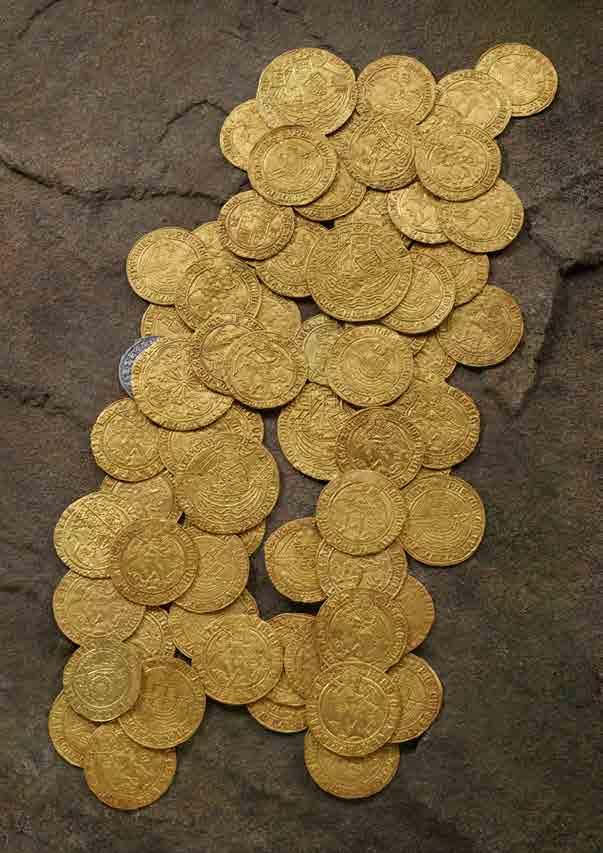
1470-1471 and it is not surprising that the earliest Angels in the hoard date to Edward IV’s second reign (1471-1485) by which time the Ryal had ceased to be issued. During the reign of Henry VII (1485-1509) and for the first 17 years of that of his son, Henry VIII (1509-1547), the Angel would be the main gold coin struck in England. In the 1490s modifications were made to the design that reflected the increasing influence of the Renaissance on the English coinage. St. Michael’s feathered body, which had been inspired by the costumes worn by actors in late medieval mystery plays, was replaced by the armour found on Spanish depictions of the saint.
Henry VIII’s profligacy rapidly depleted the considerable treasure he had been bequeathed by his father. War with France and the king’s magnificent and costly courtly displays combined with rising prices and the debasement of competing Continental coinages to result in a severe lack of specie in circulation. In 1526 another great reform of the coinage was undertaken to rectify the situation. The mastermind was Henry’s brilliant chief minister, Cardinal Wolsey. The Angel retained its old weight but was now valued higher at 7 shillings and 6 pence and was only struck in small numbers for ceremonial use. Its place as the workhorse of the English gold coinage was taken by a new coin called the Crown of the Double Rose, worth 5 shillings. The design of the new coin was the Tudor rose, which combined the red rose of Lancaster and the white rose of York. Whereas all gold coins issued by English kings prior to 1526 (including the Noble, Ryal and Angel) had been struck in fine gold of 23 carats 3 ½ grains, Wolsey’s new Crown was struck at a purity of 22 carats. While coins in fine gold continued to be struck into the seventeenth century, Wolsey’s new ‘Crown gold’ remains the prescribed standard for the purity of English gold coins to the present day.
The Crown of the Double Rose was the first English gold coin to name a queen. The Tudor rose on the obverse divided the crowned initial of Henry to the left and Katherine of Aragon, his first wife to the right. It would be Henry’s long struggle to divorce Katherine that set in motion the seismic events that led to his break with Rome. Both Katherine and Jane Seymour, Henry VIII’s third wife, are named on the Crowns of the Double Rose in the New Forest Hoard. By the time the coin naming Jane was struck Henry was Supreme Head of the Church of England and the assets of the Catholic Church were being steadily appropriated under the direction of Thomas Cromwell, the man who had replaced Wolsey as chief minister.
The sole silver coin in the hoard, a Groat of fourpence, was also a product of Cardinal Wolsey’s reform of 1526. This denomination had been the largest silver English coin issued from the reign of Edward I (12721307) onwards with the exception of the small number of Testoons struck by Henry VII. Wolsey reduced the weight of the Groat from 48 to 42 ½ grains and introduced on the obverse the first true likeness of Henry VIII; previously all Groats of this reign re-used a late portrait of Henry VII. Remarkably the New Forest Groat actually names Wolsey who struck it in his capacity as Archbishop of York. It is the only Groat in the English series to name someone other than the monarch.
When the New Forest Hoard was buried, sometime shortly after 1537, it had a total value of £26, 5 shillings and 5 ½ pence. This was a considerable amount of money. Calculating the relative value of a money from five hundred years ago is fraught with difficulties. A ‘real price’ calculation gives us a figure in the region of £23,000. Derived from the Retail Price Index this calculation vastly underestimates the purchasing power of money in the late medieval and early modern periods. The ‘labour value’ of the hoard however, a calculation extrapolated from wage indexes, provides a far more substantial figure in the region of £224,000, while a calculation of the hoard’s ‘relative income value’ (a measure of the income or wealth per capita GDP), gives an extraordinary total of some £564,000. It is interesting to note that the median property price in rural England the late 1530s has been calculated at £25.
The coins in the New Forest Hoard are generally in a very high state of preservation and of full weight. This quality and the lack of die duplicates - there are only two Angels in the hoard struck from the same pair of dies - suggest it was a savings hoard, carefully assembled over a long period of time. Wolsey’s reform of 1526 encouraged the hoarding of the earlier fine gold Angels as attested by the hoards discovered at St Albans in 1886 and at Asthall in Oxfordshire in 2007, the latter now on display in the Ashmolean Museum. The New Forest Hoard is exceptional in that it contains coins of both the fine and crown gold issues.
Mr and Mrs. W.’s home is a modern one with no evidence of an earlier Tudor building. Whilst the location the hoard was found is a mere two miles from Hurst Castle (built by Henry VIII from 1541 to 1544 to guard the Solent), one would expect a far higher number of coins of the later Crown gold period and a larger number of die duplicates to associate the hoard with the construction of this fortification. It seems more likely that the coins were deposited in the context of the troubled years of the late 1530s at the height of the first phase of the Reformation. This was a period that the historian Brendan Scott has described as ‘the greatest dislocation of people, property and daily life since the Norman Conquest.’ The village and manor of Milford formed part of the estates of Christchurch Priory. On 28 November 1539 the last prior of Christchurch, John Draper, surrendered the priory to Cromwell’s commissioners and so began the process of inventorying and removing the many treasures of the church. Though we will never know by whom or for what reason the New Forest Hoard was buried it is tantalizing to speculate that the coins were concealed in order to keep them safe from the reaches of the rapacious king’s men.
In addition to the king’s titles the following legends are found on coins in the hoard:
Noble and Ryal
IESVS AVTEM TRANSIENS PER MEDIVM ILLORVM IBAT
But Jesus, passing through the midst of them, went His way. Luke iv. 30
Angel PER CRVCEM TVAM SALVA NOS CHRISTE REDEMPTOR
Crown of the Double Rose
Groat
By Thy cross, save us, O Christ, our Redeemer.
RVTILANS ROSA SINE SPINA
A dazzling rose without a thorn.
POSVI DEVM ADIVTOREM MEVM
I have made God my Helper. Psalm 54, 4
A note on the catalogue:
The coins in the hoard have been catalogued as thoroughly as possible. The legends are fully transcribed and standardised. Die duplicates where found are given. These are derived from a survey of coins in the Herbert Schneider and British Museum collections, the coins of Henry VII published in SCBI 23 (Ashmolean Museum) as well as previous sale records. The late initial mark pheon Angels of Henry VII’s type V and those Angels of the first coinage of Henry VIII were summarily recorded by Potter & Winstanley and Whitton respectively on account of the large number of dies used to strike these issues. These types predominate in the New Forest Hoard and are particularly well represented in the BM collection due to the 1935 bequest from the collection formed by Thomas B. Clarke Thornhill. This donation included more than 80 Angels of these types, all from different die pairings.
The six coins recovered in the archaeological excavation are marked with an asterisk at the end of their PAS numbers.
Bibliography
BM British Museum collection, accession numbers noted.
BW C.E. Blunt & C.A. Whitton. ‘The Coinage of Edward IV and of Henry VI (restored)’ in BNJ 25 (1945-48).
N. J.J. North. English Hammered Coinage. Vol. 2, 3rd ed. London. 1991.
PW W.J.W. Potter & E.J. Winstanley. ‘The coinage of Henry VII’ in BNJ 30-32 (1960-63).
S. Sovereign Rarities, The Standard Catalogue of British Coins. London. Annually. SCBI 23 D. M. Metcalf. Coins of Henry VII. Sylloge of Coins of the British Isles 23. Ashmolean Museum, Oxford. 1976.
Schneider P. Woodhead. The Herbert Schneider Collection. Part 1, London, 1996.
Whitton C.A. Whitton. ‘The Coinage of Henry VIII and Edward VI in Henry’s Name’ in BNJ 26 (1949-51).
Whitton C.A. Whitton. ‘The Heavy Coinage of Henry VI’ in BNJ XXIII-XXIV (1938-43).



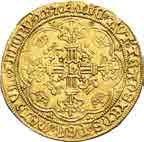




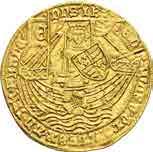
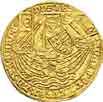
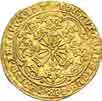


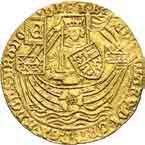





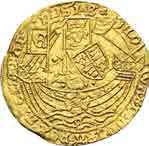







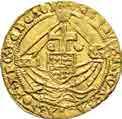
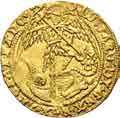




















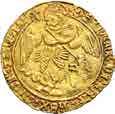
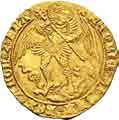
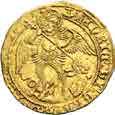
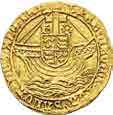






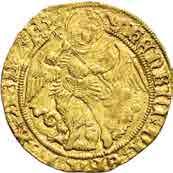




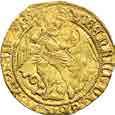
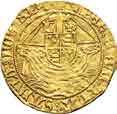
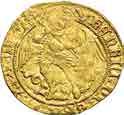








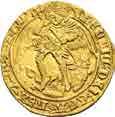

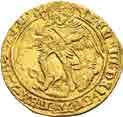
























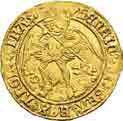



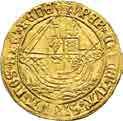



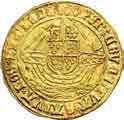








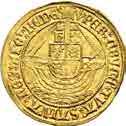
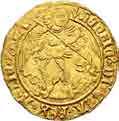



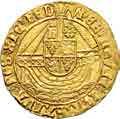
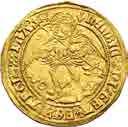








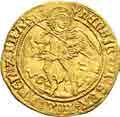



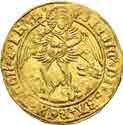



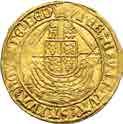
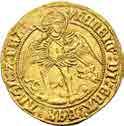


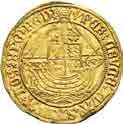








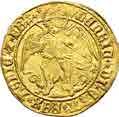



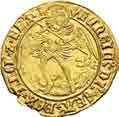









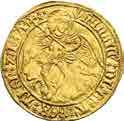


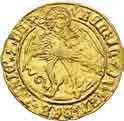
















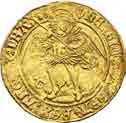
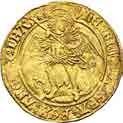





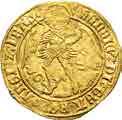
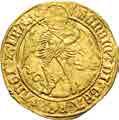












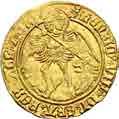


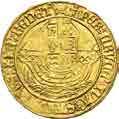
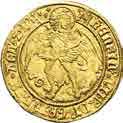






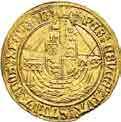



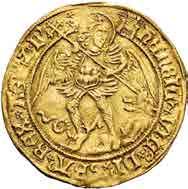

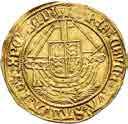
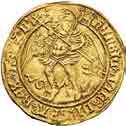

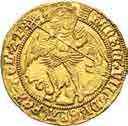




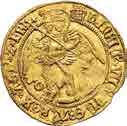


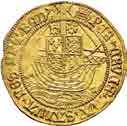

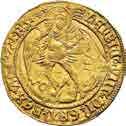



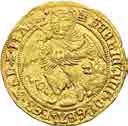








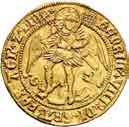

















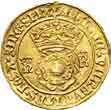









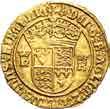

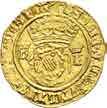

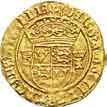


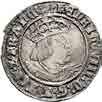



























































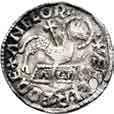


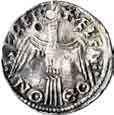
































The earliest coin of Edinburgh.




































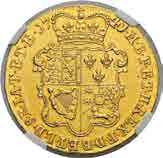

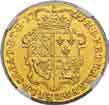
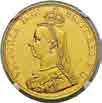
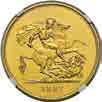
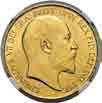
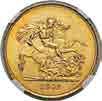













































Join our auction simply and conveniently from home. Our live bidding system only requires an up-to-date web browser and works on all modern devices such as computers, notebooks, tablets and smartphones.
Important: If you have not signed up yet, please note that you have to register and get approved as a live bidder at www.arsclassicacoins.com/biddr/ or at www.biddr.com/auctions/nac/ before you can participate in our auctions.





